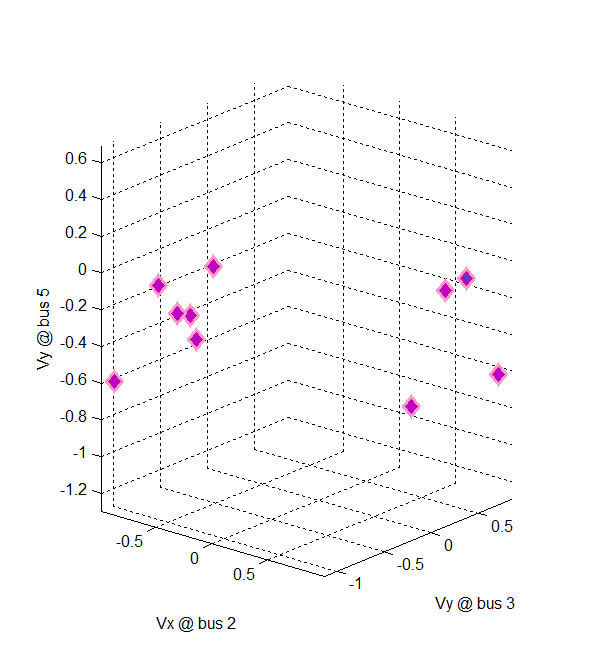Power Flow Solutions
The power flow problem (also known as the load flow problem) is one of the core problems in power engineering. It describes the power balance relation for each node in terms of node voltages and node power injections.
Particularly, one solution, known as the high voltage solution, is of primary interest because it usually ensures all the node voltage magnitudes being within engineering limits. Numerous techniques have been developed and applied to find such a solution, for example, the Newton Raphson method, the fast decoupled method, the DC power flow, the continuation power flow, the holomorphic embedding method, etc.
Because the power flow problem is a nonlinear polynomial system (more precisely, a quadratic system), it admits many other solutions besides the high voltage solution. Researchers noticed the existence of these solutions decades ago, and had discussions on their physical meaning. Nowadays we realize that these solutions are somehow related to the power system transient stability analysis, especially for the classical swing equation model. So identifying multiple power flow solutions is benefitial for the transient stability analysis. It also has its own interest for solving structured quadratic systems because in general completely solving a quadratic system is hard. Needless to say locating only the real valued solutions.
Elliptical Formulation and Holomorphic Embedding Based Continuation Method
Here we include the power flow solution sets for several IEEE test systems below. These solutions are obtained from our recently developed technique called the holomorphic embedding based continuation (HEBC) method which is inherited from a modified branch tracing approach on the elliptical formulation. It enables us to find as many real valued solutions as possible to the systems with dozens of nodes. It is the first time (quite sure not the last time) that we can compute the real valued solutions for these systems to such an extent. The numbers of solutions may be astonishing for some experienced power engineers. The solutions themselves seem to follow certain distribution patterns that have not been realized before. Interested readers can have a quick and brief visualization at On Distribution Patterns of Power Flow Solutions.
Benchmark Solution Sets for IEEE Test Cases
14-Bus Case Sample 2019/07/01: case14_solu.zip
All In One Test Case Solution Sets 2019/07/01: Test_Case_Solution_Sets
Graphical Illustrations
The following animation shows how the branch tracing approach locates all the real valued solutions for a 5-bus test case. It only needs to follow three different curves to enumerate all the ten solutions. However, the connectivity of these solutions are unknown (at present) prior to a complete search of all the curves.
